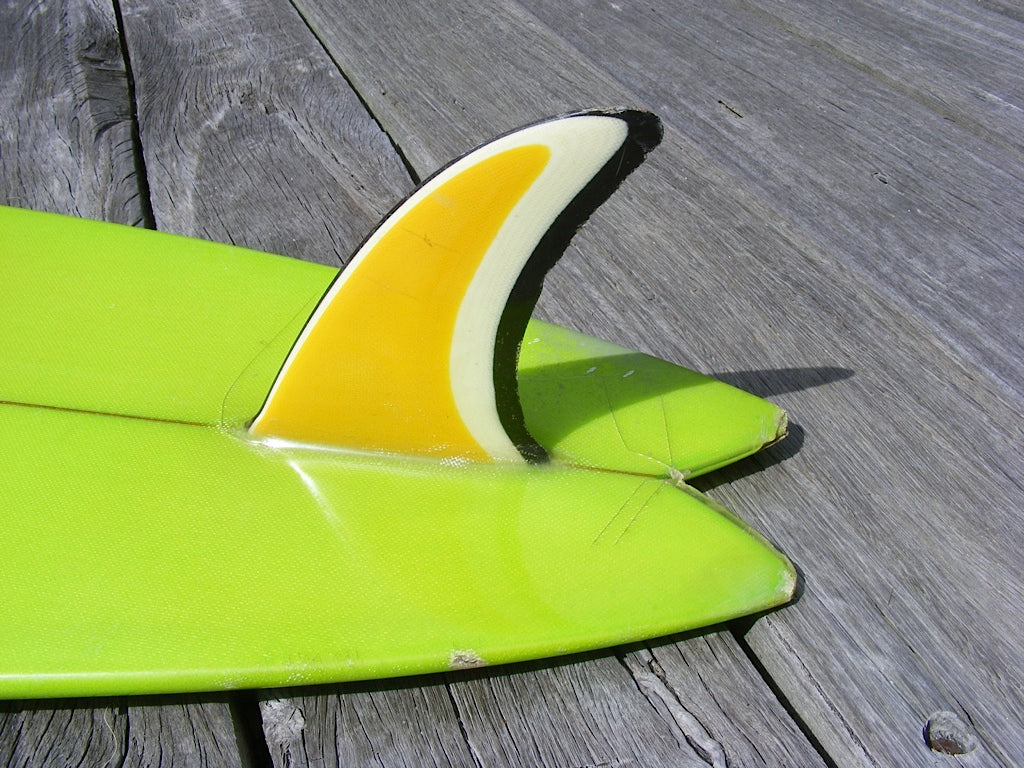It is shocking to note that people no longer ride single fins, not considering longboards! Surfers have been known to associate the board design with specific cultural eras, and it is shocking to learn that single fins are now generally thought to be superannuated. In fact, the majority of the young surfers I have spoken with have never ridden a single fin (Shortboard) surfboard. Well, I cannot blame them.
Changing times bring about changing technology and with it, everything now seems easier. In this case, though, I think modern technology has actually overshot the intended purpose and in the process screwed up everything. If you have ever tried single fins, then you will agree that the thrill is different. Way better. Like adding ketchup to fries better.
A walk down memory lane
 An artistic impression showing the evolving surfboard fin design
An artistic impression showing the evolving surfboard fin design
We have come a long way. It all started with solid, 100 pound redwood boards that had no fins but a round bottom.
The finless round bottomed surfboards acquired enough lateral drag to continue in a straight line. Well, I agree we needed technology to take away from this…
Then in came the Tom Blake surfboard. Unlike the conventional boards at that time (1930’s), this board had a quasi-flat bottom with square rails achieved from its hollow and boxed structure. The initial models had no fins and this made it inconceivably difficult to surf in a straight line. The popular belief that flat bottoms with sharp edges will hold on the board was put to test. Blake noted that such bottoms fleece the water off the rails and the surfer will lose control. He added a metallic ski keel on the back of the board and the problem was solved. The Surfboard fin was born! Well, there were lots of experiments on the surfboard fins. Board makers such as Quigg, Kivlin and Simmons had a field day. In the 1950’s, the surfboard fins were minimalists; added just to provide enough lateral drag to guide the surfboard in a straight line. Late 1950’s, board builders were actively increasing the size of the surfboard fins. It is in this era that the D-fins were born. Surfing was open for all! A decade later, the sun was setting on the D-fins with board makers preferring more complex fins inspired by George Greenough’s kneeboard design. Surfers had to wait until the 1968 to experience Shortboards… and here we are…
Single Fin on a Shortboard: How Does it Ride?
Single fins board seized being the norm in the early 1980’s. Ever since, it has been a futile fight to reclaim the throne. Surfers are not aware of what they are missing. If you ever surf on one, you will notice the difference from the tri-fin thruster.
 Crozier Single Fin Surfboard
Crozier Single Fin Surfboard
Of course you cannot switch to single fins surfing overnight. It takes practice. Especially for someone who has been used to the tri-fin. It might not be much of a change for first time surfers, but it will definitely feel awkward for surfers who are used to tri-fins. To make the major rip, you will need to switch from pumping down the line to trimming the waves. This is the bit that makes it difficult to switch from tri-fin to single fin. Riding a single fin surfboard calls you to accept whatever the wave throws at you. Once you get acquainted, it will feel more comfortable trimming down the line. You will enjoy the hold too. You will get higher speeds along a straight line, unlike in tri-fins surfboards (because we have less fin drag). The only way tri-fins can be faster is when you pump them quickly rail to rail. A single fin gives you more of a pendulum fashion of surfing. You will experience a short delay before manoeuvres develop. Smooth arching turns will feel more fluid and achieve better form and style. It will be kind on you when you are surfing smoothly and harsh when you move abruptly. In a nutshell, single fins surfboards are cleaner and give you a more glide tailored style of surfing. I suggest that you watch old surf videos. You will notice that the boards were thicker, the surfers got into the wave very early and they made strangely different lines. If you don’t own a single fin board, you are better off borrowing/renting one than buying one. Once you get acquainted, then you can go shopping for a single fin board.

